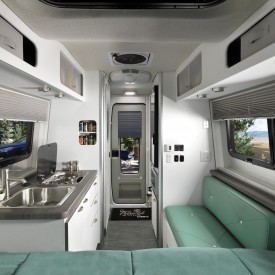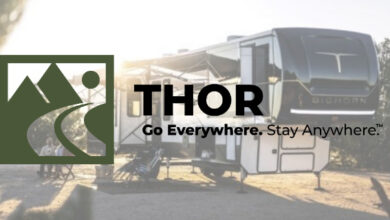Fast Company: Airstream Accommodates Digital World

For the past five years, Airstream has celebrated a new golden age of growth. With sales up 218 percent over that time, the company has been operating at full production capacity, building 110 trailers a week for months; it’s now expanding to a 750,000-square-foot production facility in its home town of Jackson Center, Ohio, which will open in 2019. Already a hit with Millennials who want to work on the road, the company is releasing two smaller, lower-cost models to continue wooing these younger customers, and looking to partner with designers and companies that can help it evolve.
This story by Mark Wilson originally appeared in Fast Company.
While Airstream is built upon disconnecting from the digital world, CEO Bob Wheeler sees Airstream’s future in designing to accommodate it.
The modern era for the company began in 2008, when Wheeler – who had been an Airstream product designer and engineer for six years – took over as CEO. The company was coming off a time of decent organic growth that was largely the result of infrastructural improvements, like getting dealers and distributors on the ground in more areas and modernizing the Airstream cabin’s interiors. But Wheeler “had the pleasure,” as he puts it, of taking control during the subprime mortgage lending crisis and subsequent recession.
“Our business was down 60 percent in ’08 and ’09 fiscal years. But coming out of that, there were a lot of things [in our favor],” said Wheeler. “There was a cultural shift away from conspicuous consumption. We were small and luxurious. People didn’t want small and cheap.”
Two years after Wheeler took over, Instagram was founded. It became the perfect platform to advertise travel and adventure to a whole new generation of potential Airstream buyers. Nothing punctuated a scenic vista or campsite like an aluminum trailer that looked straight out of a simpler time.



